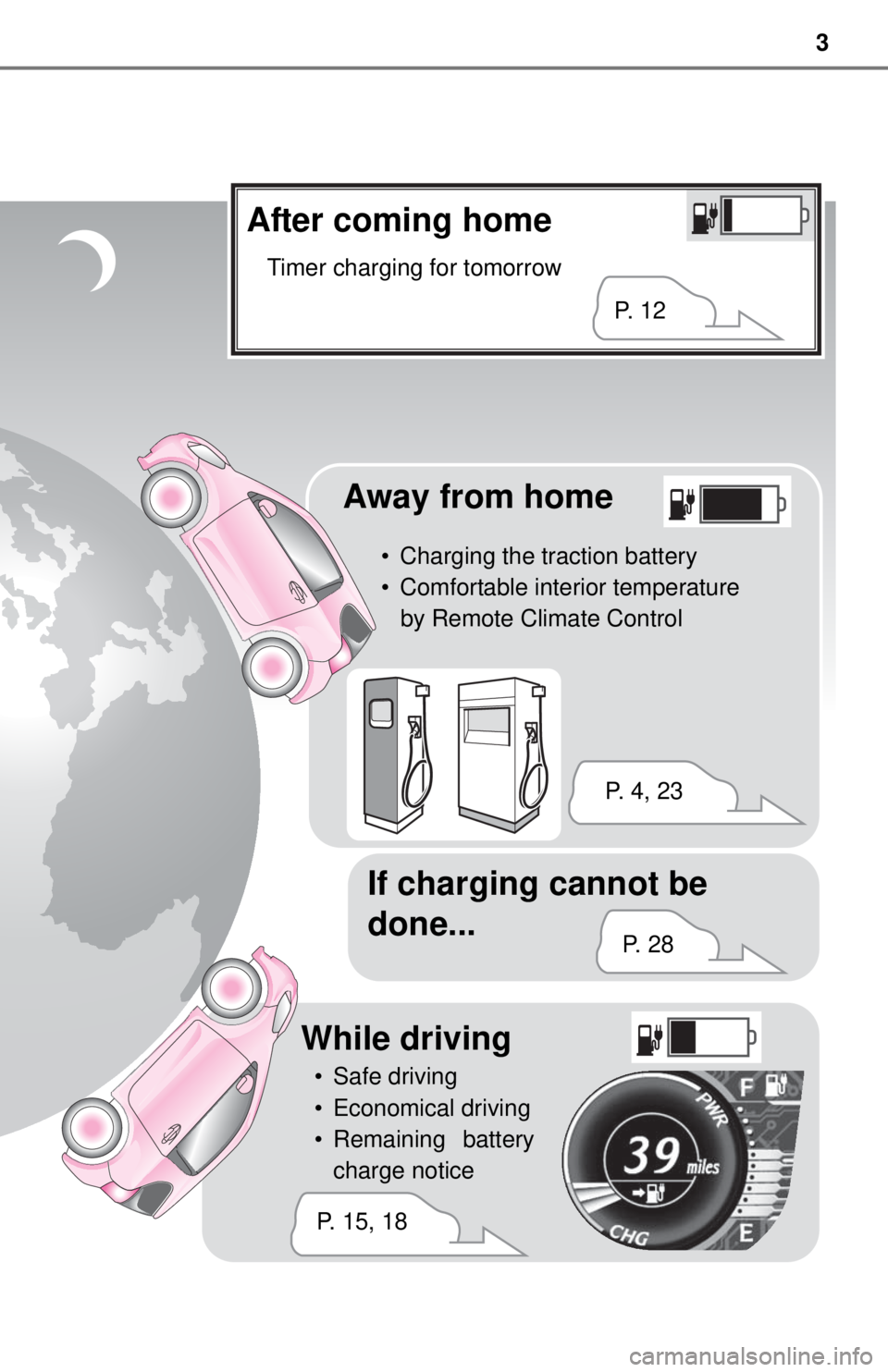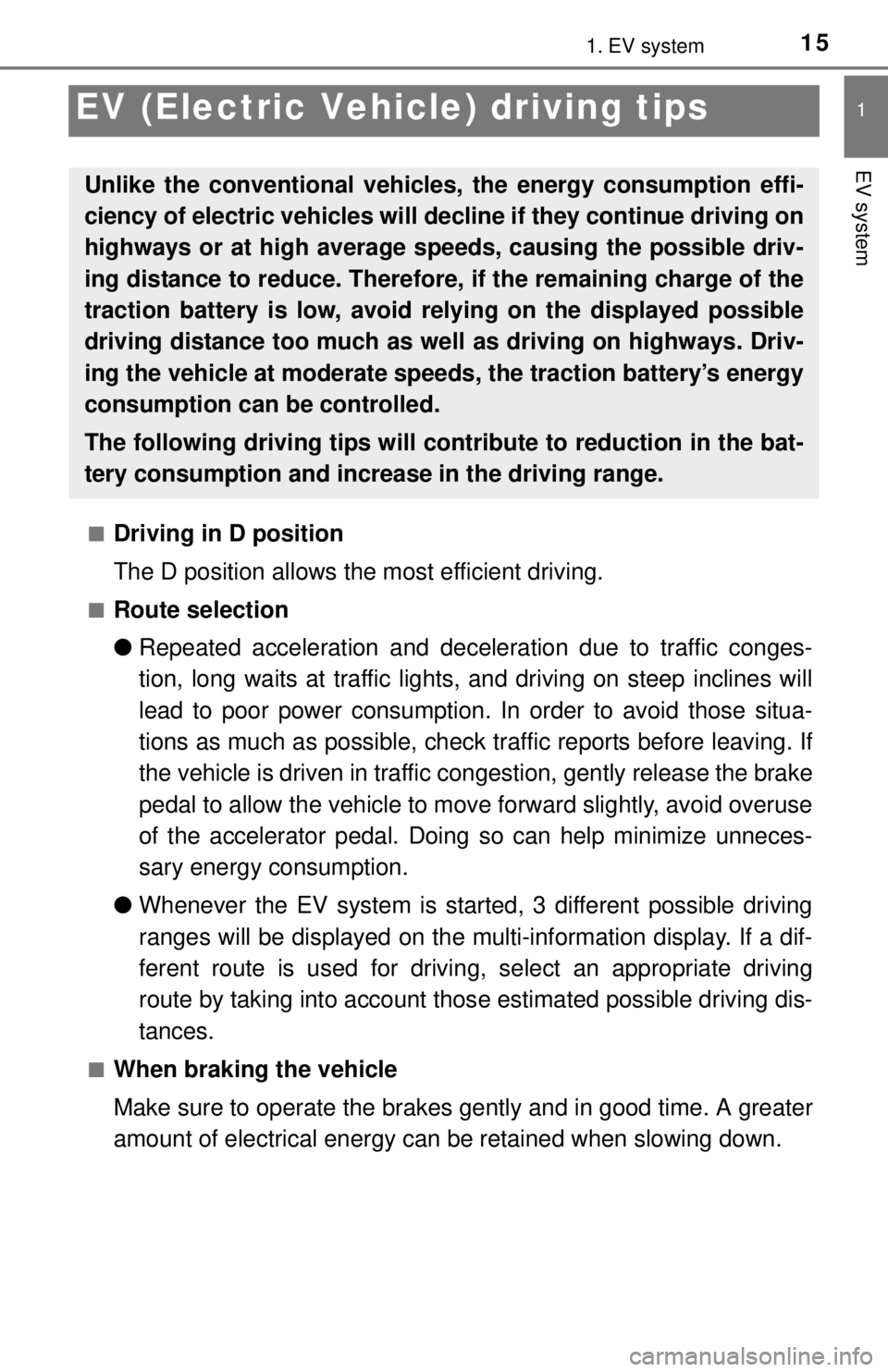3
After coming home
Timer charging for tomorrow
Away from home
• Charging the traction battery
• Comfortable interior temperature
by Remote Climate Control
If charging cannot be
done...
P. 1 2
P. 4 , 2 3
P. 2 8
While driving
• Safe driving
• Economical driving
• Remaining battery
charge notice
P. 15, 18
151. EV system
1
EV system
EV (Electric Vehicle) driving tips
■Driving in D position
The D position allows the most efficient driving.
■Route selection
●Repeated acceleration and deceleration due to traffic conges-
tion, long waits at traffic lights, and driving on steep inclines will
lead to poor power consumption. In order to avoid those situa-
tions as much as possible, check traffic reports before leaving. If
the vehicle is driven in traffic congestion, gently release the brake
pedal to allow the vehicle to move forward slightly, avoid overuse
of the accelerator pedal. Doing so can help minimize unneces-
sary energy consumption.
●Whenever the EV system is started, 3 different possible driving
ranges will be displayed on the multi-information display. If a dif-
ferent route is used for driving, select an appropriate driving
route by taking into account those estimated possible driving dis-
tances.
■When braking the vehicle
Make sure to operate the brakes gently and in good time. A greater
amount of electrical energy can be retained when slowing down.
Unlike the conventional vehicles, the energy consumption effi-
ciency of electric vehicles will decline if they continue driving on
highways or at high average speeds, causing the possible driv-
ing distance to reduce. Therefore, if the remaining charge of the
traction battery is low, avoid relying on the displayed possible
driving distance too much as well as driving on highways. Driv-
ing the vehicle at moderate speeds, the traction battery’s energy
consumption can be controlled.
The following driving tips will contribute to reduction in the bat-
tery consumption and increase in the driving range.

